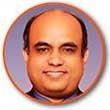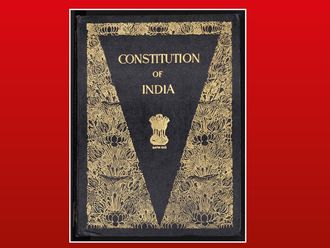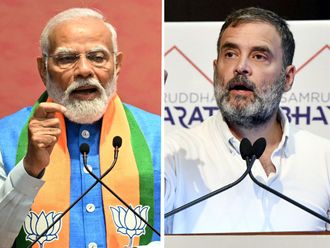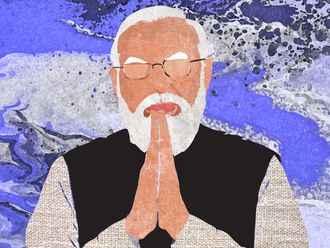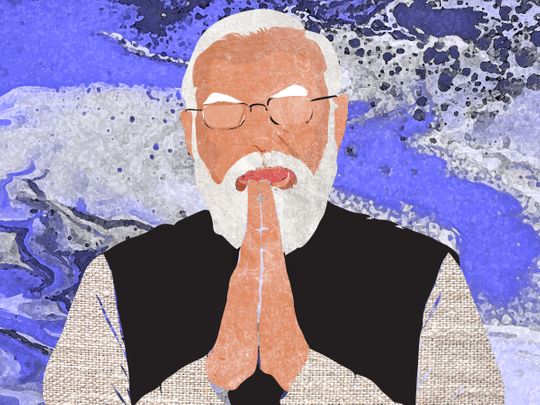
India’s Prime Minister Narendra Modi completes 8 years in office today. Before assessing his achievements and impact in these 8 years, consider some big data points across 14 broad segments in which the government operates.
First, Serving the Poor and Marginalised
A world model of financial inclusion with over 450 million Jan Dhan Bank accounts; 280 million people enrolled in accidental insurance cover of Rs. 2 lakhs ($2,500) with very nominal premium (Rs. 12/year or 13 cents/year); over 120 million people provided Life Insurance cover of Rs. 2 lakhs ($2,500) with negligible premium (Rs330/year or $4.2/year) and over 180 million people covered with free health insurance of up to 5 lakhs ($6,500/year).
Second, Ensuring Farmer Welfare
In procurement through Minimum support Price (MSP), a 74-fold increase in procurement of pulses; almost $100 billion dollars spent between 2014-21 for procuring paddy at MSP and almost $45 billion spent in procuring Wheat at MSP between 2014-21. All of these measures contributing substantially in raising farm incomes.
Third, Empowering Women for New India
Almost 70% of the total collateral free loans (350 million) to small entrepreneurs have been given to women entrepreneurs (230 million) thereby ensuring their financial independence. More than 90 million women empowered through clean cooking gas solutions; more than 220 million women from the bottom half connected to formal financial systems.
Fourth, Youth Led Development
7 new Indian Institutes of Managements (IIMS) and Indian Institute of Technology (IITs) each opened since 2014. Additionally, 16 new All India Institute of Medical Sciences (AIIMS) and over 86,000 new medical seats have also been added in past 8 years. Number of new Provided Fund subscribers (a good proxy for formal jobs creation) is more than 35 million in the last 5 years.
Fifth, Middle Class and Ease of Living
Middle Class people earning up to Rs, 500,000 (almost $6,500) have to pay zero tax. This is more than double the exemption limit 8 years ago. In 2014, only 5 Indian cities had metro trains for intracity travel. That number is now 18 cities.
Internet broadband data costs are down by 97% since 2014, and are the lowest in the world! Interest rates on home loans have come down from a high of 10.3% in 2014 to about 6.6% in 2022 enabling millions of people to purchase their own homes.
Sixth, Infrastructure Construction and Speed and Scale
Over 100 lakh crore ($1.3 trillion) budgeted under Gati Shakti for infrastructure spend in next 5 years. More than 325,000 Km of rural roads have been built since 2014, taking rural road connectivity to 99%. National Highways were constructed at the pace of over 37Km/day in 2020-21 as compared to just about 12 Km/day in 2013!
Seventh, Health care and Pandemic Management
India has administered over 1.9 billion Covid-19 vaccine doses in just over a year, setting a world standard of scientific prowess, regulatory processes and logistics delivery. India’s PPE manufacturing capacity was ZERO in 2020. It is now over 500,000 per day!
There were just 2,100 ICU beds in 2020, now they are 140,000. There were just 50,000 oxygen supported beds in 2020, now they are over 500,000. Over 40% of India is now covered through Ayushman Bharat health insurance schemes and more than 32 million treatment procedures using this scheme has already been availed.
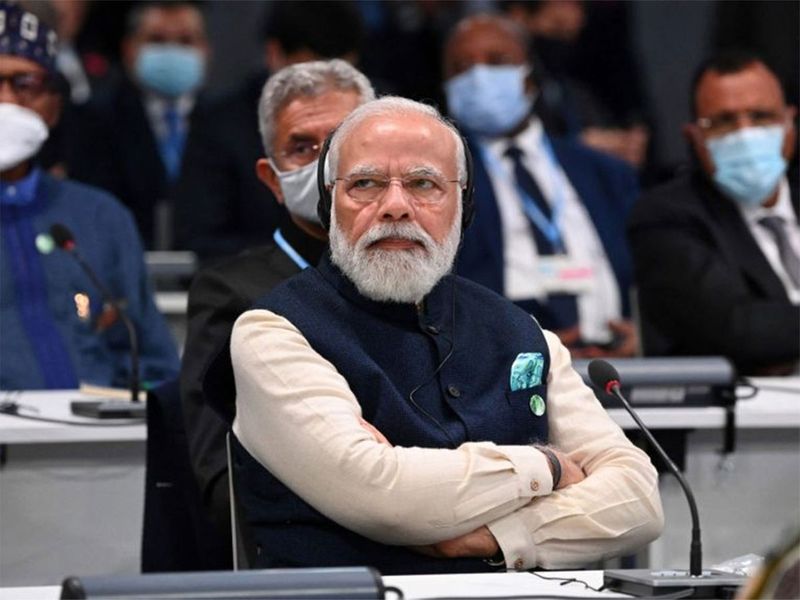
Eighth, National Security and Foreign Policy
Zero deaths since 2016 in terror attacks outside of Jammu & Kashmir, Punjab and North East. Article 370 and Article 35A scrapped. Left Wing Extremism (LWE) is down by 70% since 2009.
From one of world’s biggest defence importers, India is now a major exporter! Total defence exports in 2021 amounted to almost $1.5 billion, up from just $225 million in 2014.
Ninth, Economy and Reforms
In 2021-22 total value of Indian exports was $670 billion — the highest ever.
In 2021, 40% of the entire world’s digital payments took place in just India. All leading financial institutions of the world are unanimously forecasting that India will be the fastest growing major economy in the world post the pandemic with the growth forecasts ranging between 8.5% to 9.5%.
India’s PLI scheme has been an unprecedented success in promoting manufacturing in India. Just one example — exports of mobile phones from India have risen in four years from just about 200 million dollars in 2017-18 to about $5.5 billion in 2021-22.
Tenth, Ease of Doing Business
More than 25,000 unnecessary compliances that were stifling business have been scrapped. Similarly, 1,400 archaic laws have been repealed. 29 laws and hundreds of clauses have been converted into just 4 new labour codes. From 14 approvals needed earlier to start a business, the number is down to just 3.
The results of these measures have reflected in rankings as well. Getting electricity connection ranking has risen from a low of 137 in 2014 to now 22. Similarly, dealing with construction permits ranking has risen from 184 to 27.
Businesses are obviously taking advantage of this new supportive environment. Number of Start-ups registered in 2016-17 were just 733. That number has risen to 14,000 in 2021-22.
Eleventh, Making Northeast a Growth Engine
Iconic infrastructure projects such as the Bogibeel bridge, pending since decades, has been completed. 6 new airports, 21 medical colleges, first ever goods train reaching Manipur, highway construction connecting every part of the region have all given additional economic fillip to the region. Coupled with peace accords settling almost every pending dispute in the region has also brought peace in the states.
Twelfth, Conserving Cultural Heritage
The construction of the Sri Ram Temple in Ayodhya. The redevelopment of Kedarnath and conception and execution of Kashi heritage corridor. The opening of the Kartarpur Sahib corridor facilitating pilgrimage of Sikh devotees. Bringing back stolen artefacts from across the world — over 4,00 of such artefacts already processed.
Prasad scheme that develops sites of all religions with a view to provide modern amenities around it. These are just some of the woks done in conserving India’s cultural heritage.
Building India’s National War Memorial 60 years after it was first proposed by the Armed Forces. Statue of Unity honouring Sardar Patel, the man who integrated India post 1947.
Panchateertha honouring the legacy of drafter of Indian constitution, Dr. Ambedkar. The list of such iconic national monuments celebrating India’s true heroes is also growing.
Thirteenth, Tech-Powered India
Over 1.2 billion mobile subscribers in India out of which more than 750 million have smartphone access. Cost of 1 GB broadband data is less than Rs. 10 (about 12 cents), the lowest in the world! More than 5.5 billion transactions take place per month through UPI.
Over 42 Start-ups in India attained unicorn status in just 2021! India’s DBT model has saved over $25 billion already by plugging leakages, setting global standards in targeted, leakage proof welfare delivery.
Fourteenth, Environment and Sustainability
Think of the achievements in this space in this way. India fulfilled its COP 21 goals 9 years ahead of schedule. More than 360 million LED bulbs have been distributed across the country which contributes to 47 million kWh savings of energy per years as well as CO2 emission reduction of almost 39 million tonnes per year.
Installed solar energy capacity has grown by over 1,900% since 2014 and India’s overall green energy installed capacity now stands at 164GW. Prime Minister Modi’s LIFE (Lifestyle for Environment) mission has given a global template to mitigate climate change.
But how and why has this been possible?
A question that can arise looking at these numbers is how has Modi been able to pull off such humongous feats in the past 8 years? Two paradigm changing philosophies by Prime Minister Modi have fundamentally altered the Indian governance landscape.
First is Modi’s model of ‘Sabka Saath, Sabka Vikas’ (Together, for Everyone’s Growth, with Everyone’s Trust). This may sound simplistic and anodyne at first glance but has had profound impact in the way India is now governed.
Before Modi, for sixty years after Independence, the governance and delivery mechanisms were geared to deliver for specific groups, depending on the inclinations of the government of the day. Those groups could be religious, regional, caste or class driven or any other such construct.
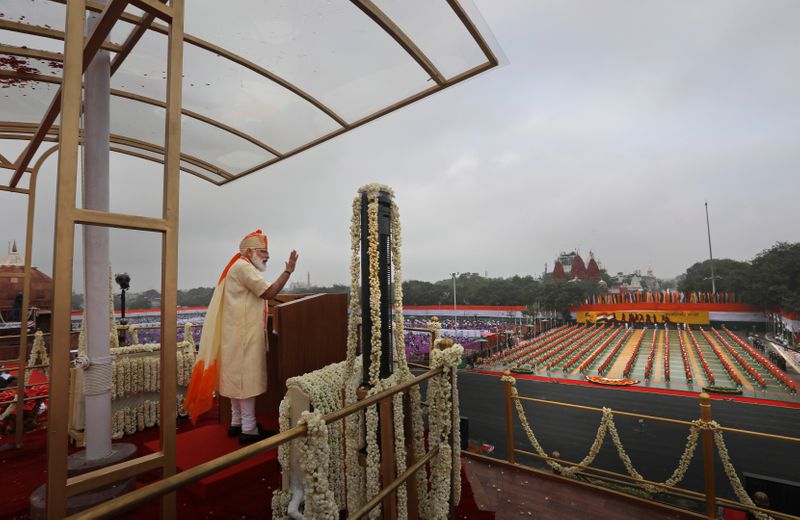
The priority was to target the blocks that voted for the then ruling party without focusing too much on other groups. It was the result of such partisan approach that in 2014 only 58% people had bank accounts, only 38% people had clean sanitation access, more than 18,000 villages and more than 40 million homes were still without electricity connection, and similar other lopsided parameters across a range of basic services.
What ‘Sabka Saath, Sabka Vikas’ does is that instead of prioritising vote bank blocks, it focuses on delivery for everyone. It also goes with Modi’s personal branding of delivering big on numbers.
The number will be big at a world scale, the percentage coverage will be 100% only if it focuses on delivery for all. It is this fundmanetal shift in mindset that has enabled these humungous achievements.
Second, is Modi’s model of ‘Jan Bhagidari’ (Participative Governance). It is this participatory model which motivated the country to observe a voluntary lockdown, without mandate or coercion, on a mere call by Modi. The same model enabled India to vaccinate almost a billion people without any mandate.
Participative governance builds stake for everyone to contribute in their own way for the nation to succeed and then the success is also of anyone rather than of any one party or family.
In sum, in the last 8 years, Modi has given a model of governance that can serve as a case model for other countries in a democratic set up to chart their path of growth and development even while navigating diversity and entrenched challenges.
In the year 2022, India’s 75th year of Independence, one can assert with some sense of confidence that India has finally presented a model of good governance which is completely home-grown.


